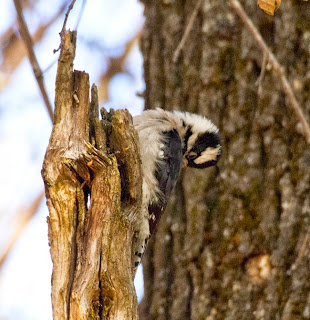Fisheries Resources of the Auburn Ravine
Protection
and restoration of aquatic habitat for anadromous species is one of the primary
goals
of the Auburn Ravine/Coon Creek ERP. Six objectives have been identified in
support
of this goal (Table 5). Auburn Ravine, Coon Creek, and Doty Ravine provide
habitat
of varying quality for Steelhead trout (Oncorhynchus mykiss) and chinook
salmon
(Oncorhynchus
tshawytscha), which are both special status species. The Draft ERP
identified
a number of potential opportunities to enhance the aquatic habitat for these
species.
However, additional information about how the species are currently using the
existing
habitat, such as extent of migration and the location of active spawning and
rearing
areas, is needed to focus habitat enhancement efforts.
This
focus is desirable for several reasons. Restoration funds are limited and it is
important
that projects undertaken provide a meaningful benefit to the species.
Implementing
spawning area enhancements when adults cannot bypass the barriers to
reach
spawning areas is probably not the most productive use of resources. In
addition,
the
complexities of private property ownership and the use of the channels for
conveyance
and flood control must also be considered. Private property owners, the
water
purveyors, and the local jurisdictions responsible for flood management have
expressed
their willingness to participate in aquatic habitat enhancement efforts
provided
the
proposed projects are executed in a manner that reasonably reflects an
understanding
of
the actual uses and needs of the species in the local watersheds. For example,
prior to
considering
redesign of a diversion structure to provide passage, the operator would want
to
know that there was a reasonable potential for the adults to even reach the structure.
Therefore,
development of this comprehensive strategy has been identified as a first-tier
priority
(FR6).
Another
first-priority objective to enhance fisheries resources is to better manage the
import
and transport of sediment in the creek corridor (FR7). This is considered a
first
tier-priority
because excess sediment is known to compromise aquatic habitat for many
species,
and because some of the mechanisms of sedimentation, such as erosion,
backwatering,
and flooding are creating significant other problems in the watersheds.
Four
additional objectives have been defined for fisheries resources. These address
removal
of barriers to adult migration (FR3), juvenile emigration (FR4) and enhancement
of
spawning and rearing habitat (FR1 and FR5). Each of these objectives is
important,
and
is to some degree dependent on the comprehensive strategy described above for
focus.
In reaches where salmonid presence and meaningful habitat restoration
Auburn Ravine/Coon Creek ERP Projects 13 Foothill
Associates © 2004
opportunities
are already known to exist, such as Coon Creek, the assessment and
removal
of adult migration barriers should proceed concurrently with development of the
comprehensive
strategy. This objective is thus assigned a first-tier priority. The
remaining
three objectives are assigned to the second tier since efforts aimed at the
improvement
of spawning and rearing habitat and juvenile emigration are most
meaningful
only if barriers to adult migration are addressed.
Table
5 - Fisheries Resources Objectives
ID
Objective Priority
FR6
Develop a comprehensive strategy to guide implementation of measures
to
enhance salmonid habitat in the watersheds that identifies current and
historical
migration timing and extent, determines locations of existing
and potential
spawning and rearing habitat, and establishes habitat
restoration/enhancement
priorities. Incorporate information developed
for
the PCCP in this process.
1
FR7
Implement measures throughout watersheds to reduce excess sediment
and
sediment imports. Coordinate with assessment, remediation, and
restoration
activities under Water Quality and Plant Community tasks.
1
FR3
Based on the priorities established in the salmonid habitat enhancement
strategy,
identify barriers for adult chinook salmon and steelhead trout
migration
to spawning areas, such as diversion structures or gauging
stations,
in all watersheds excluding Markham Ravine. This assessment
of
barriers is already underway on Coon Creek. Develop a
comprehensive
strategy for improving passage that considers priority,
flow,
infrastructure needs, alternative structures, and ownership by 2009.
1
FR4
Based on the priorities established in the salmonid habitat enhancement
strategy,
identify barriers for juvenile chinook salmon and steelhead trout
to the
Sacramento River during emigration in all
watersheds excluding
Markham
Ravine, and develop a comprehensive strategy for improving
passage
that considers priority, flow, infrastructure needs, alternative
structures,
and ownership by 2009.
2
FR1
Based on the priorities identified in the salmonid habitat enhancement
strategy,
select areas in the upper watersheds (excluding Markham
Ravine)
that are determined to have good potential for spawning habitat
but
where stream channel sediment concentration is excessive. Reduce to
target
condition (particles < 6.35 mm in diameter to less than 20% of the
gravel/cobble
substrate composition, and particles <0 .833="" in="" mm="" p="">
diameter
to less than 10% of the gravel/cobble substrate).
2
FR5
Optimize juvenile salmonid rearing habitat in the upper watersheds where
the
potential for fish presence is high as determined by the salmonid
habitat
enhancement strategy. Optimal habitat should have approximately
60
percent pool habitat and 40 percent riffle habitat.
2
Auburn Ravine/Coon Creek ERP Projects 14 Foothill
Associates © 2004
4.0 TASKS
For
each objective, a set of tasks has been identified to support implementation of
the
objective.
The suggested sequencing for the individual tasks reflects the order in which
the
interdependent activities should be implemented. Tasks that are not
interdependent
are
may be implemented concurrently. Not all objectives and tasks are relevant to
each
of
the four watersheds considered by the Draft ERP (Auburn Ravine, Coon Creek,
Doty
Ravine
and Markham Ravine).
The AR/CC ERP database identifies which tasks pertain
to
which watersheds.
4.1 Public Outreach
PO1




























